Author: Scarlett Wu, Investment Manager at Mint Ventures
It has been a year since the last review of the Yuga ecosystem. Yuga Labs, which was once hailed as a deity, continues to deliver products that meet or occasionally exceed expectations. However, the prices of ecosystem tokens and NFTs have already shattered the market’s high bubble fantasy about the metaverse/cryptocurrency IP. With AK’s Twitter call to action, combined with the fundamental aspects and delivery of the Yuga ecosystem that have refreshed previous research conclusions, as a long-term follower and participant in the gaming and metaverse market at Mint Ventures, I will reassess Yuga Labs and its related ecosystem.
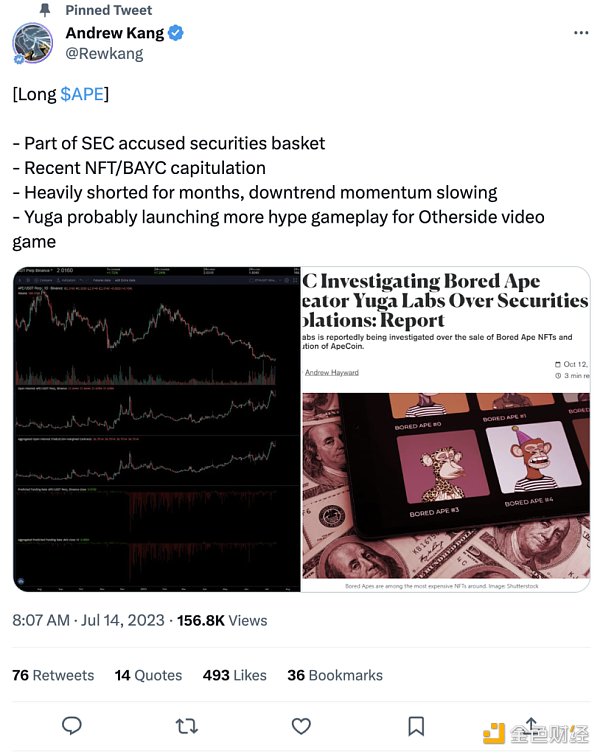
- Inventory of 5 confirmed FIPs and their applications in Farcaster
- Coinbase’s first on-chain festival, Onchain Summer
- A Guide to Account Abstraction Allowing More Flexible and Seamless Interaction with Ethereum
This study attempts to answer the following questions:
-
Has Yuga Labs and ApeCoin DAO’s product delivery over the past year earned the community’s trust? (This will be explained in the following section by examining the support for NFT and $APE prices)
-
What are the upside and downside scenarios for the subsequent ecosystem? Are AK’s inferences reasonable?
1. Yuga Labs Ecosystem Annual Review
The previous Yuga Labs ecosystem review was published in October of year 22. In these nine months, the fundamental changes in Yuga Labs can be summarized as follows:
1.1 Yuga Labs Mainline: MDvMM Arrives Late
In the seed round pitch deck circulating within Yuga Labs, the storyline of MDvMM (Mechanical Dog vs. Mechanical Monkey) was supposed to be a three-month-long event, starting in August 2022 and ending in October 2022.
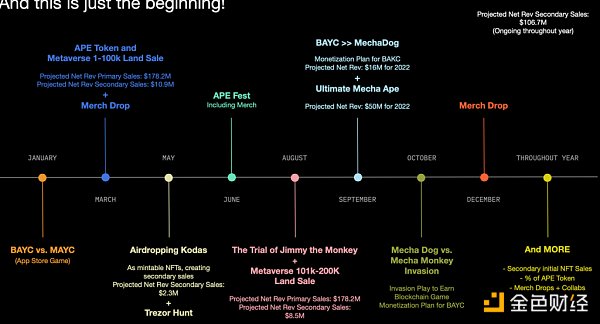
Screenshot of Yuga Labs’ circulating pitch deck
However, perhaps due to more intense internal personnel changes, the first message of this storyline, “The Trail begins this Christmas,” was not released until November 25, 2022.
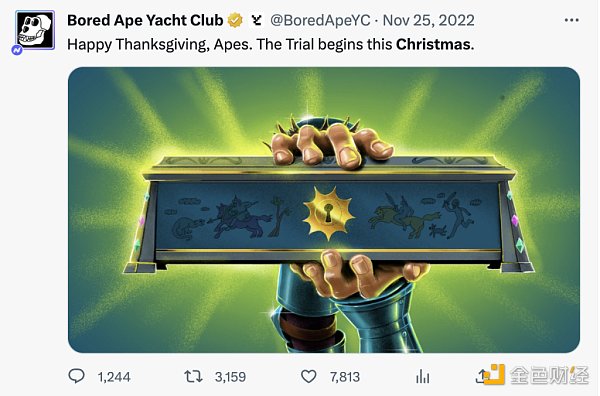
Happy Thanksgiving, Apes. The Trial begins this Christmas. pic.twitter.com/PTlUtcIm8Z
— Bored Ape Yacht Club 🍌 (@BoredApeYC) November 24, 2022
This also marked the starting point of the rise in Yuga series NFTs. Taking BAKC as an example, several key narrative and game rule releases in the subsequent period were critical points in the price changes of BAKC.
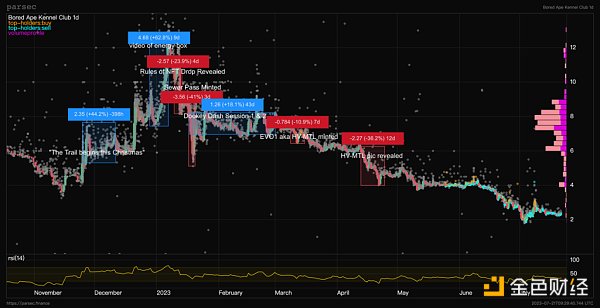
LianGuairsec, Charted by Mint Ventures
MDvMM Timeline

In the narrative of MDvMM, there are many key points worth discussing. This is not only closely related to the high prices of Yuga’s own NFTs/FTs but also involves the construction of the entire NFT community’s narrative. Yuga Labs, once the pioneer of NFT narrative universe, can it still bear the responsibility of saving the NFT market with a new narrative?
1.1.1 Common Problems with Incentivized Games – Criticized Web2.5 Anti-Cheating
Since the beginning of Dookey Dash, due to the expectation that “highly ranked Sewer LianGuaiss can be upgraded to NFTs with higher value” in the later stages, slave accounts and boosting services in the market may receive hundreds or even thousands of USDT in unit price. (In fact, this speculation is valid – at the time of writing this article, the floor price of higher-level HV-MTL HOLO is 6.5E, while the floor price of the most common HV-MTL is 0.6E.) It is the expectation of the Yuga Labs game and the trust in the fairness of the game that have created such a profitable trading market.
Unfortunately, although there are “suspicious” detection mechanisms in the game process, there are still simple ways to bypass the anti-cheating system:
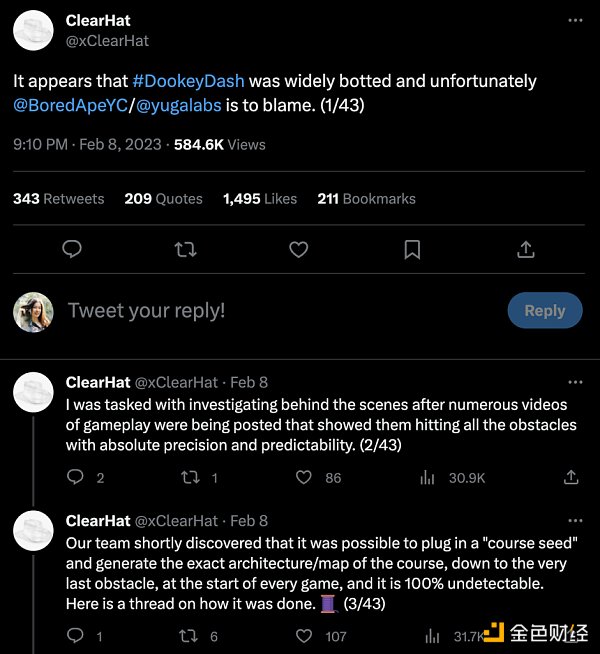
@xClearHat
The core logic is: Although Dookey Dash appears to be random and cyclical, the chosen process is actually limited. This process depends on a “process seed”. As long as the same seed is inserted locally multiple times when entering the game, the exact same game process, from rewards to obstacles, can be generated. The anti-cheating logic set by Yuga Labs itself is that as long as the “game process corresponding to the local process seed” matches the “player’s actual input data sent to the server”, the player is determined to be a real person. With a determined process map, cheaters can design a rule-based bot or use the best path algorithm to efficiently pass through these obstacles while collecting fragments. Since the bot can simulate mouse movement and clicks, it is difficult to determine if cheating is taking place based on the bot – players can even livestream themselves playing the game on Twitch, actually just randomly moving the locked mouse, while the on-screen monkey accurately avoids obstacles and collects enough fragments, pretending to be deeply engrossed and receiving cheers and applause.
Unfortunately, the author @xClearHat believes that Yuga could have avoided/delayed the complete invasion of the game by cheaters through the following methods:
-
Provide process maps and data on the server side instead of locally: This means higher costs, as low latency requires bandwidth, and bandwidth means dense deployment of servers, while Dookey Dash players are scattered around the world.
-
Encrypt game rules: Before the end of the first round of Dookey Dash, the game could be shut down for maintenance, and the JavaScript files could be recompiled into new files that partially obfuscate cheaters – previously, the files used by the game were nearly plaintext, making the aforementioned reverse engineering exceptionally easy. Since Dookey Dash is a time-limited game, as long as the cracking process is complex and time-consuming enough, it can actually maintain the fairness of the game.
-
Establish a dynamic system and provide process seeds at random intervals: Players will no longer be able to directly generate game processes corresponding to any process seed at any time, but will need to find the right timing – this will greatly increase the difficulty of cheating.
Despite the widespread dissemination of this thread, it cannot prevent the ultimate announcement of the game result by Yuga Labs – the first-ranked esports player was not actually the first-ranked, but after kicking out the cheater in the game video, he obtained a valuable key. But how many cheaters who are not greedy to compete for the first place with esports players have not been discovered and are still holding relatively high rankings? We don’t know.
The games in the blockchain world are not always fair and just in terms of results – at least not web2.5 games.
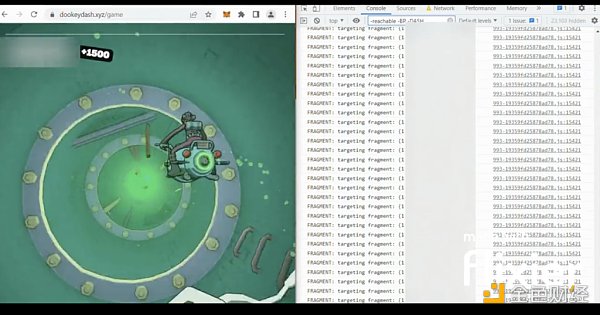
Cheating system created by @xClearHat playing Dookey Dash
Perhaps the widespread dissemination of this thread is enough to attract attention, or Yuga Labs has already arranged for a change in strategy in the next stage. HV-MTL’s Forge uses a clever way to weaken the impact of bots and cheats on the gaming experience: voting. In each of the six stages, the AMP level of each stage is determined by ranking, and the ranking is determined by voting. Users can choose to upvote and downvote – even if they use bots to push their HV-MTL to the highest, as long as the gameplay does not match the screenshot, or other players unanimously believe that the increase in votes is not reasonable, they may be downvoted to a very low ranking.
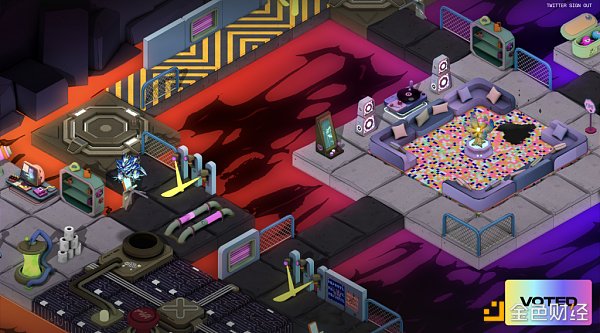
https://forge.hv-mtl.com/preview/1
The community’s self-supervision is certainly a good solution, shifting some of the auditing costs from purely project parties to game players. Advancing to the highest ranking not only requires advanced computer skills (those operations that require occasional clicks of the mouse can still be completed through cheats, although there is a risk of being banned), but also requires extensive social relationships (group chats for mutual voting), and sufficient capital (if there are not enough people, more votes can be obtained by using additional mecha tickets, or by buying votes OTC at a price of about 1 USDT per vote). But the question is, why invest so much time and effort into a game with average gameplay and a focus on ranking? Currently, the main methods of canvassing are still “mutual voting” and “owning more mechas to vote for oneself”. Although Yuga has set up Twitter account binding for non-holders to vote, it is actually used to differentiate rankings within the same score range, and it is not the core point of distinguishing rankings (from the results, there are indeed many situations with the same score range, so it is necessary to attach importance to Twitter account binding for voting.)
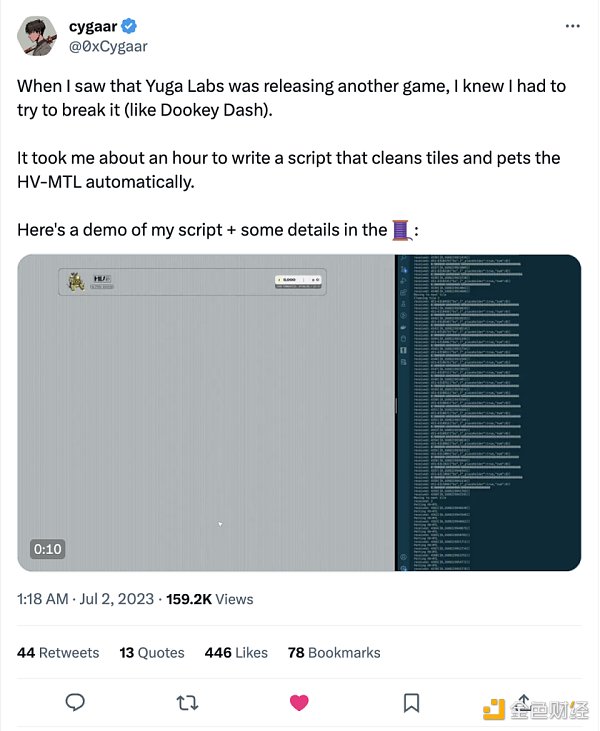
@0xCygaar
The end of the first season in late July has given some clues. Out of more than 20,000 HV-MTLs, only 133 obtained the highest level of AMP. The AMP in the first season corresponds to the mecha’s head, and the ongoing second season corresponds to the mecha’s weapon – if Yuga Labs can achieve or even exceed expectations in delivery, the six AMPs should form a very cool mecha – but will there still be thousands of ETH buying golden monkeys or the myth of keys?

AMP Concept Diagram
Cheating has always been a key element that destroys the Magic Loop in the traditional gaming industry. Web3 games need to pay more attention to the powerful bot and gold farming community due to the introduction of more abundant incentives. Community self-supervision is likely to be a good solution, and being bot-friendly may be another solution. The auto chess mode has been increasingly introduced into the original game mechanism by traditional game manufacturers. When auto chess simplifies most of the player’s interactions in the game, what players want to experience is what? Is it the result of the play & earn account balance growth, the thrilling experience of another story, the pleasure of showing off skills to defeat each boss, or the social status symbol that can be boasted among friends?
From the perspective of Dookey Dash and HV-MTL, the core goal of players may be simple – to obtain scarcity, which means NFT with higher potential value. There may be social value and cultivation experience, but not much.
1.1.2 Token Release and Economic System Consumption – Value Capture of Water in a Sieve
When it comes to the consumption and value capture of $APE, we need to clarify a concept – where do the consumed tokens go?
Since players directly use $APE, it is not a buyback; $APE will not be issued or destroyed on the total supply of 1B, so it is not a burning deflation – in fact, the income of $APE enters the wallet of Yuga Labs. For Yuga Labs, this is the revenue of their game.
According to Arkham’s analysis, part of the income from the Dookey Dash mini-game entered Coinbase shortly after the game ended, and another part briefly stayed in another multi-signature wallet before also entering Coinbase.
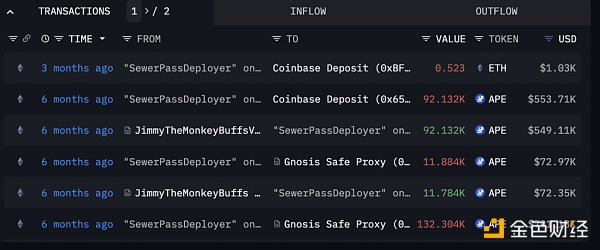
https://platform.arkhamintelligence.com/explorer/address/0x9223abD716FF22C62Db2c6760eB6A59a33AF729E
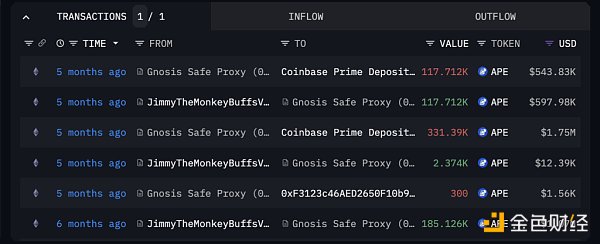
https://platform.arkhamintelligence.com/explorer/address/0xDa7a4a45cE9c5b42102fcb456AE2532beD252a24
In other words, the consumption of $APE does not bring long-term reduction in circulation, but brings a certain degree of buying pressure in the short term, as well as a short-term circulation lock. The length of this time depends on Yuga Labs’ mood. Moreover, if Yuga Labs holds a large amount of $APE, it may cause concentrated selling pressure.
Under this premise, we can analyze the consumption of $APE in Dookey Dash and HV-MTL respectively:
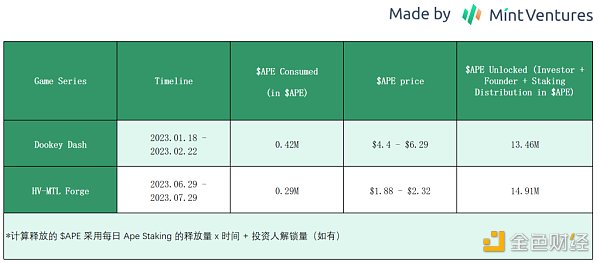
Regardless of whether the tokens received by Yuga Labs are available for sale at any time, even if the project team behaves with integrity and does not sell these tokens, it is only a small amount of token rewards allocated by the staking system and the remainder of tokens unlocked by investors and the project team during the same period.
1.1.3 NFT Utility vs. Narrative – Why is BAYC’s price not as glorious?
Since BAYC’s price fell from the “floor stabilizing around 50E”, the market has been puzzled: why is BAYC’s price and consensus not as glorious?
The answer may be very simple: the past glory was when retail investors rode on the train of wealth creators – once the big players who accumulated BAYC in the early years exit the market, BAYC’s liquidity consensus and value consensus disappear. Machibigbrother.eth and Franklin are among them.

The former became the core holder and evangelist of the NFT series early on in BAYC minting, holding dozens to hundreds of BAYC, while the latter used the name “Franklin has 61 Apes” on Twitter to show his identity in the BAYC community. He also staged several dramas of smashing and liquidation, jokingly referred to as the “monkey market maker”.
During the market downturn in the past six months, Machibigbrother was forced to accept 71 BAYC due to trusting Blur’s bidding wall and inadvertently getting caught, and then suffered heavy losses and sold them all at once, causing the price of BAYC to plummet. Franklin announced a temporary retreat from Twitter on April 19th and sold all the remaining BAYC in his hands, making one less big player willing and capable of catching a large amount of BAYC dumped on the market.
On June 22nd, after Machibigbrother built up his BAYC position, he proposed the ApeCoin DAO plan, suggesting that the DAO use the treasury to repurchase NFTs to maintain their prices. When the information fermented in the market, on June 25th, he sold 39 BAYC in his hands. Apparently, the belief and narrative in the eyes of small holders are just tools for hype and profit in the hands of big players. (In fact, ApeCoin DAO is still a long way from the proposal to the voting stage, and Machibigbrother’s previous proposals have never been recognized and pushed into the voting stage by the DAO, but the news itself is enough to scare the general public who do not understand this ecosystem and gain some market feedback.)
This reminds me of a conversation I had with Shim before: the narrative consensus of an NFT project at the beginning is most intuitively manifested in price consensus – not only in the NFT market, but also in the traditional luxury goods industry. Looking back at the changes over the past year, it is clear that Yuga Labs’ price consensus is declining while the consensus on gaming product strength is increasing. In other words, its NFTs are transitioning from luxury goods that were difficult to price and overnight moonshots to consumer goods that can be priced based on peers.
When BAYC transitions from a consensus that is difficult to price to a tool for calculating airdrop prices and discounting cash flow, and becomes a part of the game as props and functional add-ons, it is transitioning from pure narrative to more and more utility. Utility raises the price baseline, but it also limits the price ceiling, and at the same time, holders transition from being collectors who “HODL and show my status” to speculators who “ambush before airdrop and sell after airdrop”. Even though Yuga Labs tries to differentiate BAYC from MAYC, BAKC, HV-MTL, and $APE in terms of psychological positioning, it still cannot change the fact that they influence each other and that BAYC has fallen from the pedestal of luxury goods.
1.2 Otherside Subline: Low Price but Promising Game Quality
In March 2023, Otherside 2nd trip was launched. The 2nd trip divided players into four teams, each led by esports anchors, gamers, and NFT community KOLs, to compete in scores. Unlike last year’s 1st trip, this experience truly achieved 1) interaction and data upload of thousands of people on the same screen, and 2) gameplay attempts with thousands of people on the same screen.
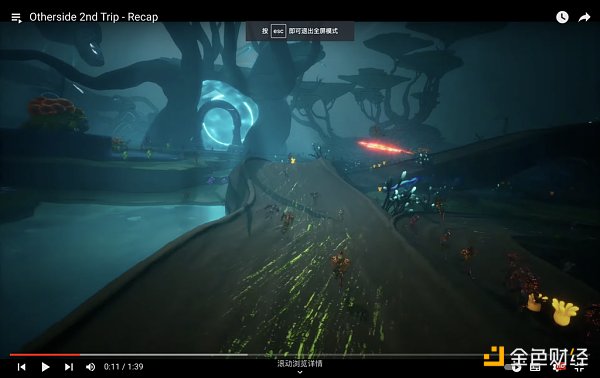
Although the author was limited by the game and couldn’t enter (despite having more than 50,000 Otherside holders, only about 8,000 people were able to enter the game), they could still experience the magnificent graphics of UE5 and the excitement of fighting alongside thousands of people. From single-player games to MMOs, from MMOs with dozens of players to thousands of people on the same screen, technological upgrades have brought new possibilities for gameplay, and Otherside is likely to be a pioneer in the gameplay of thousands of people on the same screen.
The delivery of this experience by Otherside is undoubtedly beyond expectations, but this kind of exceeding expectations did not bring an increase in the price of Otherdeed. The prize for the winners of the 2nd trip is a helmet called Otherside Relics, a total of 2220 pieces, airdropped by Otherside to the wallets of the winners corresponding to the Otherside holders. On the day of the airdrop, the price of Otherside Relics reached as high as 0.7 ETH, and it still has a floor price of 0.2 ETH.
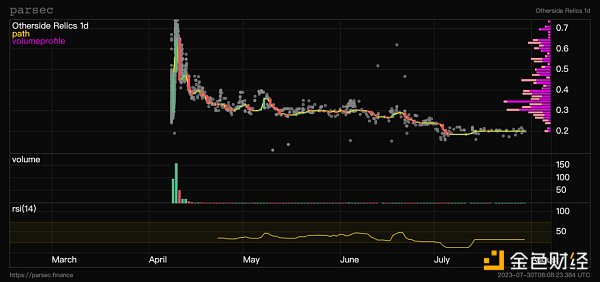
However, Otherdeed’s price was not so lucky. The market seems to interpret the airdrop expectations brought by Otherside as bearish. Distributing a new NFT means that the number of NFTs that Otherdeed holders can obtain in the future will be reduced, and the corresponding future cash flow will also decrease, resulting in a lower valuation of NFTs.

The subsequent separation of Otherdeed further intensified the decline in Otherdeed’s price,
-
Otherdeed (without Koda): Separates into Otherdeed ExLianGuainded and Otherside Vessels. Vessels will evolve into Mara in the subsequent Mara mini-game and can be combined with Koda to form Kodamara.
-
Otherdeed (with Koda): Separates into Otherdeed ExLianGuainded, Otherside Vessels, and Otherside Koda.
Obviously, Otherside hopes to maximize the development of the game attributes of NFTs. However, from the perspective of investing in the NFT series, overly complex series nesting will only confuse most non-hardcore players, and the dispersion of liquidity also makes it difficult to support the NFTs returning to their original prices. As a result, we have seen the continuous decline in the floor prices of the Otherside series.

On July 28, 2023, Otherside officially released a teaser video for its offline playtest. The experience is no longer limited to coloring mechanical robots exploring limited scenes, but it is a true exploration of the jungle, mountains, lakes, bars… It seems that the official launch of the Otherside game is no longer just a fantasy, and it may achieve the experience that the first Web3 game should have.
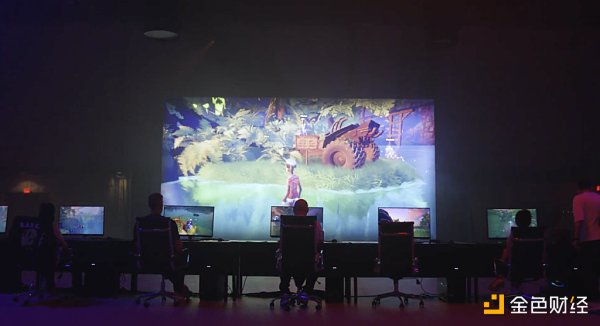
1.3 ApeCoin DAO Subplot: Poor Ecology and Astonishing Inflation
In the past six months, ApeCoin DAO has only passed more than twenty proposals, most of which are related to governance processes and improvements in Ape Staking efficiency (which seems absurd – it is hard to imagine a company that was established in a traditional way spending a lot of time improving departmental configurations and management processes more than a year after operation). Some of the proposals are rewards for $APE contributors (which also aligns with the interests of voters), and the remaining parts are mainly related to business development and storytelling, creating movies, games, and comics with Ape’s philosophy as the core of the narrative. The only proposal that seems more promising is the establishment of the Ape ecosystem project incubator led by Forj – although it is still too early to see substantial results.
From the ApeCoin DAO Council composed of initial investors to the transfer of power to Council members elected by the community, we have seen less and less innovation and courage, and the actual participants in DAO activities are also few. With billions of tokens in circulation, the total number of votes in each vote is always around 10 million. It seems that $APE holders are not interested in governance content, and for them, the greatest utility of $APE is just staking.
Going back to what we mentioned before, the introduction of $APE use cases by ApeCoin DAO:
-
Ecological Token: Yuga Labs’ products all use $APE for payment, but the actual demand does not match the circulation (see 1.3). The DAO ecosystem has not shown significant growth, making it difficult to see the possibility of matching ecological value and monetary value.
-
Means of Payment: Although some NFTs from Gucci / Times / OpenSea do accept $APE as payment, this is more of a gimmick than an actual use case. Few people are willing to hold a token with fluctuating prices for a long time as a payment tool.
-
Staking Profit: The price of $APE has dropped from $5 at the beginning of staking to less than $2, which means that without hedging, there is a high possibility of suffering heavy losses. But if all staking users are hedging – do stakers really believe in the future of $APE?
Looking at these use cases, in the inaction or incompetence of ApeCoin DAO (or the entire Yuga Labs token/NFT holder community), only staking profit has been realized – purely mining coins with coins. Even if users make some profits, does it really benefit the Yuga Labs brand? Staking + rewards is just a means of buying time and leaving opportunities for ecological construction. If the ecosystem cannot thrive during this time and the inflation is terrifying, it will be a great blow to the token price, and we can only wait for the brutal reality of token value being slashed again and again.
2. Potential Upside and Downside Analysis
Reviewing the problems, challenges, and achievements of Yuga Labs, we have summarized the potential upside and downside as follows:
2.1 Potential Upside
-
Successful launch of Otherside
-
Although it is the 2nd trip, there have been leaks of offline playtests. Yuga Labs’ previous performance in gaming has not been disappointing.
-
Breaking through the crowd
-
Deep collaboration with brands (such as previous collaborations with adidas/Gucci) depends not only on the team’s business development capabilities but also on fitting the trend of brand collaborations in the larger environment.
-
Derivative games, movies, etc.
-
Reversal of the securities narrative
-
Last October, Yuga Labs was investigated by the SEC, but the June SEC lawsuit did not include $APE.
-
Ape consumption
-
Value capture in mech games (in terms of previous activities, consumption is relatively limited compared to inflation)
-
Ape Fest (the next offline gathering in HK may drive high-net-worth individuals in Hong Kong to purchase NFTs)
2.2 Potential Downside
-
Anchoring of prices and narrative no longer exists + inadequate liquidity
-
Lack of market makers (previous buddies and franklin) and high community dependence on Yuga Labs. Prices will continue to fluctuate based on the effects of Yuga Labs’ new activities. However, in the current low liquidity market, price fluctuations are not significant for positive news, but will experience a significant decline for negative news. Unlike the decentralized art collection logic of Punk, most collectors do not care about temporary prices. Without the desire to sell, there will be no end to being pulled down from the altar due to liquidity shortages.
-
Token inflation
-
$APE still has significant inflation, and investors may further sell off their holdings (the current price is already lower than the valuation in the primary market, 2 billion FDV, which is lower than the 4 billion given by VC at that time, although the VC holds not only token mappings but also Yuga Labs’ equity corresponding to IP).

-
Almost no token use cases
-
Payment usage – Very few people use $APE for transactions on OpenSea, it’s just a gimmick.
-
Ecosystem development – In the past six months, ApeCoin DAO has been highly inefficient, and the organizational efficiency of the DAO is low and lacks incentives, which instead hampers the progress of Yuga Labs.
-
Staking – The only real use case at the moment. However, the APR (Annual Profit Rate) has dropped from over 300% at the beginning to 50% (pure $APE) / 140% (paired with NFTs). Hedged miners may still profit, but naked stakers suffer heavy losses.
Currently, it seems that the downside momentum is still greater than the upside. Of course, Yuga Labs’ level of delivery may mean that they will still stand firm in the industry (not dying but possibly being surpassed), but perhaps “deflating the bubble” will still be a major trend for Yuga Labs’ assets in the foreseeable future.
Like what you're reading? Subscribe to our top stories.
We will continue to update Gambling Chain; if you have any questions or suggestions, please contact us!